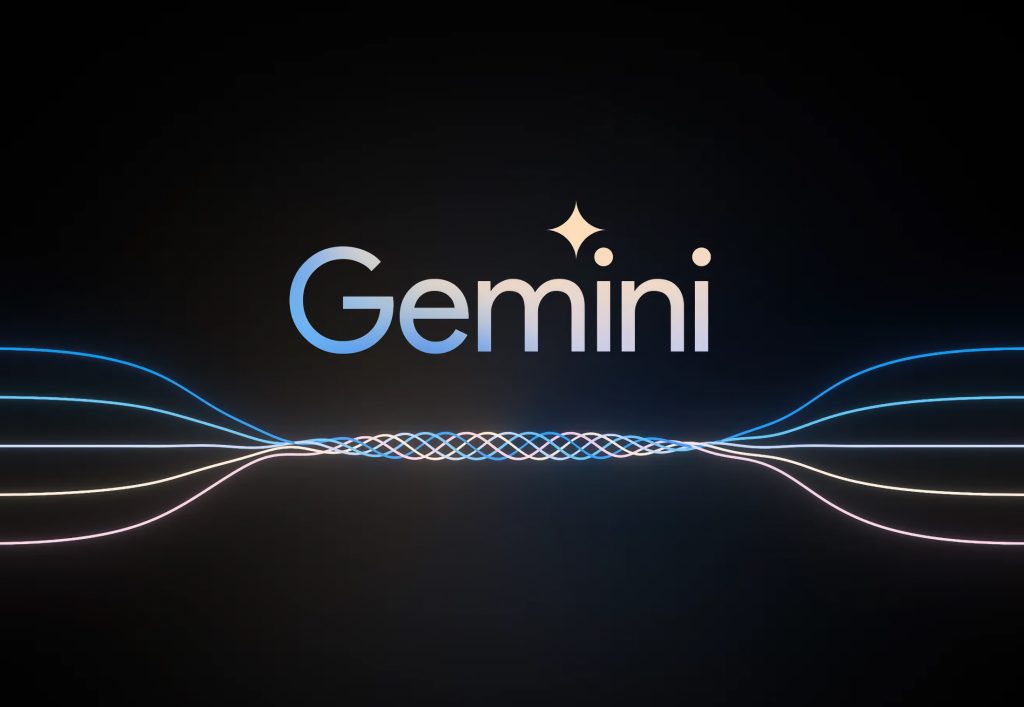Unleashing AI Reasoning: Google Debuts Gemini 2.5 Flash Upgrade
Google Enhances AI Reasoning Control in Gemini 2.5 Flash
Google has rolled out a new AI reasoning control feature for its Gemini 2.5 Flash model, designed to help developers manage how much processing power is used during problem-solving tasks. This was launched on April 17 and is intended to tackle the increasing issue where advanced AI models often overanalyze simple queries, which leads to excessive resource consumption and elevated operational and environmental costs.
Though not groundbreaking, this mechanism represents a practical advancement in the face of efficiency challenges that come with enhanced reasoning capabilities in AI software. The new feature allows organizations to carefully adjust the processing resources allocated before producing responses, thus potentially revolutionizing how they address both financial and environmental impacts associated with AI usage.
Tulsee Doshi, Director of Product Management at Gemini, acknowledged the challenge, stating, “The model overthinks. For simple prompts, it does think more than it needs to.” This highlights a critical problem where sophisticated reasoning models operate like industrial machinery attempting to perform a simple task.
Balancing Cost and Performance
The financial stakes of unregulated AI reasoning are considerable. Google’s technical documentation indicates that enabling full reasoning can make output generation nearly six times more costly than standard processing. This substantial cost increase creates a strong incentive for developers to fine-tune control over their models.
Nathan Habib, an engineer at Hugging Face who specializes in reasoning models, remarked on the broader issue within the industry: “In the rush to showcase smarter AI, companies are treating reasoning models like hammers, even when there’s no nail to hit.” This inefficiency isn’t just a theoretical concern; it can manifest in practical scenarios. For instance, Habib illustrated how a prominent reasoning model became ensnared in a recursive loop while trying to solve an organic chemistry problem, endlessly repeating the phrase “Wait, but…” — a phenomenon that drains computational resources without improving performance.
Furthermore, Kate Olszewska from DeepMind confirmed that Google’s systems can frequently face similar looping issues that exhaust computing power without enhancing response quality.
Granular Control Mechanism
Google’s new AI reasoning control offers developers customizable precision by providing a range of options from minimal reasoning to a substantial “thinking budget” of 24,576 tokens. This granular control allows for tailored implementations depending on specific tasks.
Jack Rae, a principal research scientist at DeepMind, noted the difficulty in establishing optimal reasoning levels: “It’s really hard to draw a boundary on what the perfect task is for thinking right now.”
Shifting Development Philosophy
The introduction of AI reasoning control could indicate a paradigm shift in the development of artificial intelligence. Since 2019, many companies have focused on improving AI by creating larger models with increased parameters and training datasets. However, Google’s recent strategy suggests an emphasis on efficiency over mere scale.
Habib pointed out that “scaling laws are being replaced,” signaling that future innovations might emerge from optimizing reasoning processes instead of simply expanding model sizes. The environmental implications of this shift are also noteworthy; as reasoning models become more widespread, their energy consumption increases correspondingly. Recent studies show that the process of generating AI responses now contributes more to the carbon footprint than the initial training. Google’s reasoning control mechanism could serve as a potential countermeasure to this worrying trend.
Competitive Dynamics
It’s important to note that Google’s advancements are occurring in a competitive landscape.
The recently introduced “open weight” DeepSeek R1 model has showcased remarkable reasoning abilities at potentially lower costs, resulting in market fluctuations that may have triggered nearly a trillion-dollar variation in the stock market. In contrast to Google’s proprietary methods, DeepSeek offers developers access to its internal settings for local implementation. Despite this competition, Koray Kavukcuoglu, Google’s chief technical officer at DeepMind, asserts that proprietary models will continue to excel in niche areas demanding high precision, such as coding, mathematics, and finance: “There’s a significant expectation for models to be very accurate, precise, and capable of understanding complex scenarios.”
Significant signs of industry maturity are emerging as AI reasoning control development evolves, revealing that the sector is facing real-world limits beyond mere technical metrics. While firms strive to enhance reasoning capabilities, Google’s strategy recognizes a crucial truth: efficiency is as vital as raw performance in commercial contexts. This approach highlights the friction between technological progress and sustainability concerns. Current leaderboards indicate that executing single reasoning tasks can sometimes exceed $200, leading to questions about the viability of scaling these functions in real-world applications.
By allowing developers to adjust reasoning levels according to actual needs, Google mitigates both financial and environmental factors involved in AI deployment. “Reasoning is the fundamental capability that fosters intelligence,” Kavukcuoglu states. “When the model begins to think, its agency is activated.” This statement encapsulates both the potential and challenges surrounding reasoning models—their independence offers both opportunities and challenges in resource management.
For organizations integrating AI solutions, the ability to finely tune reasoning budgets could democratize access to advanced functionalities while ensuring operational discipline. Google asserts that Gemini 2.5 Flash provides “comparable metrics to other leading models at a fraction of the cost and size,” a value proposition that is further enhanced by the capacity to optimize reasoning resources for tailored applications.
The introduction of the AI reasoning control feature presents immediate practical benefits. Developers crafting commercial solutions can now make educated trade-offs between depth of processing and operational costs. For straightforward tasks, such as basic customer inquiries, minimal reasoning settings help conserve resources while still leveraging the model’s capabilities. Conversely, for more intricate analyses necessitating comprehensive understanding, full reasoning capacity is readily available.
Google’s reasoning ‘dial’ serves as a mechanism for establishing cost certainty while upholding performance standards. Interested in exploring more about AI and big data from industry frontrunners? The AI & Big Data Expo will be held in Amsterdam, California, and London, co-locating with other significant events like the Intelligent Automation Conference and Cyber Security & Cloud Expo.
Reddit Sues Anthropic Over AI Data Scraping
In a significant legal move, Reddit has initiated a lawsuit against Anthropic, alleging that the company engaged in unauthorized data scraping of its platform. This action highlights the ongoing concerns over data privacy and the ethical use of artificial intelligence.
The Modern ROI Imperative: AI Deployment, Security, and Governance
As organizations increasingly integrate artificial intelligence into their operations, the necessity to focus on return on investment (ROI) has never been more apparent. This shift mandates robust security measures and sound governance practices to effectively oversee AI deployment.
AI Enables Shift from Enablement to Strategic Leadership
The evolution of AI technology is paving the way for leaders to transition from merely enabling digital transformations to undertaking more strategic roles. This shift reflects a growing recognition of AI as a crucial driver of innovation and competitive advantage.
Tackling Hallucinations: MIT Spinout Teaches AI to Admit When It’s Clueless
In an innovative approach, a new MIT spinout is teaching AI systems to acknowledge their limitations and uncertainties. This development aims to reduce errors in AI-generated outputs, enhancing reliability and user trust.
Join Our Community
Stay informed! Subscribe now to receive all our premium content and the latest technology news delivered directly to your inbox.
Popular Articles
- The Role of Machine Learning in Enhancing Cloud-Native Container Security (39,207 views)
- Innovative Machine Learning Uses Transforming Business Applications (14,153 views)
- AI and Bots Allegedly Used to Fraudulently Boost Music Streams (12,026 views)
- The Benefits of Partnering with Outsourced Developers (10,363 views)
Artificial Intelligence is transforming various sectors, and recent advancements have made headlines. One notable development involves an MIT spinout that focuses on reducing AI hallucinations by enabling systems to acknowledge when they lack knowledge. This move aims to enhance the reliability of AI technologies.
In another exciting collaboration, IBM and Roche are leveraging AI to improve diabetes management. Their innovative system forecasts blood sugar levels, helping patients maintain better control over their health.
Conversely, concerns arise as DeepSeek’s latest AI model has been criticized for potentially undermining free speech. This model represents a controversial step back, raising ethical questions about the balance between technological advancement and the principles of freedom and expression.
Stay informed about these developments, as the intersection of AI and ethics continues to evolve, impacting industries such as healthcare and technology.
When working with hooks in the gform system, if a null value is encountered, a new identifier is generated based on the provided hook and its current length. The defined hook is then added with its associated details such as tag, callable function, and priority.
The doHook function manages executing hooks based on specific criteria. First, it extracts the parameters needed for execution. If the specified hook exists, it sorts and iterates through the registered functions, applying them in order of priority. Relationships between different hooks (like action and filter) dictate how results are processed, ensuring that the first element in the array can be modified as needed.
To remove a hook, the removeHook method is invoked. It checks for the hook’s existence, then filters through the registered hooks to identify and discard any that match the specified criteria, which could include specific tags or priorities.







